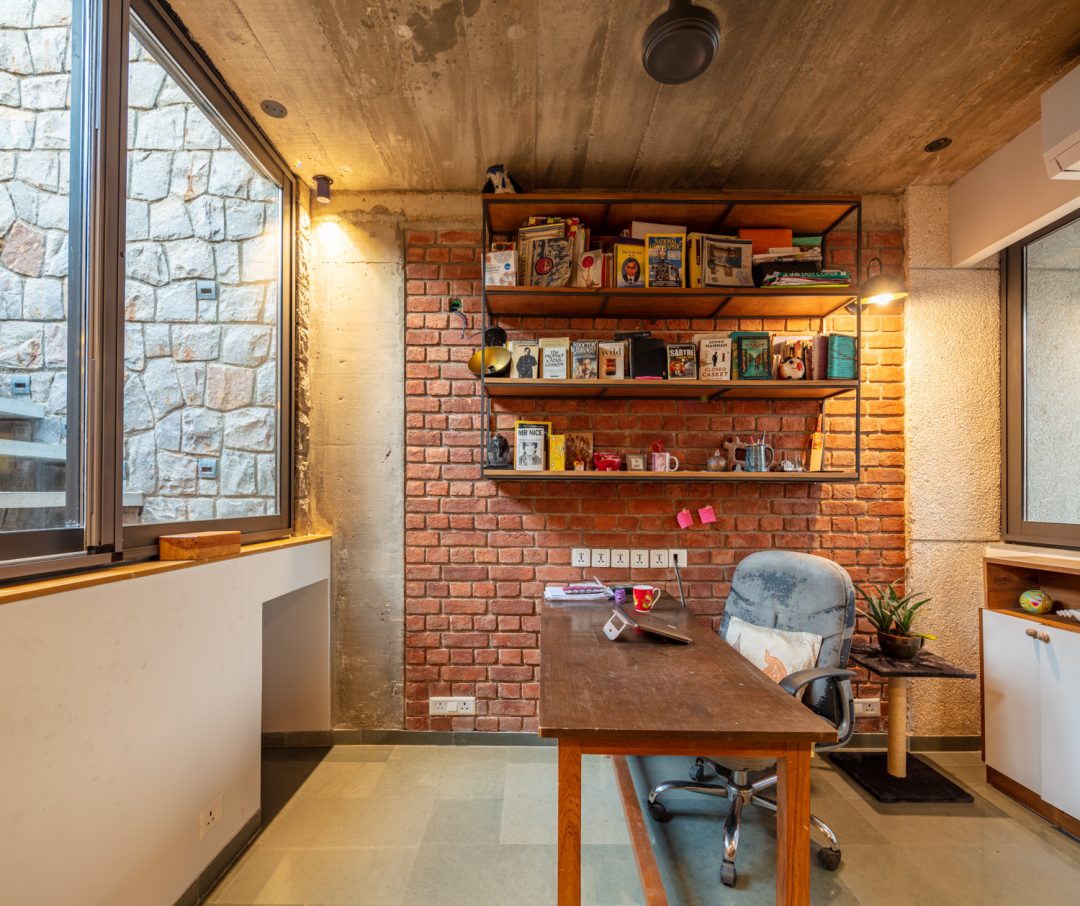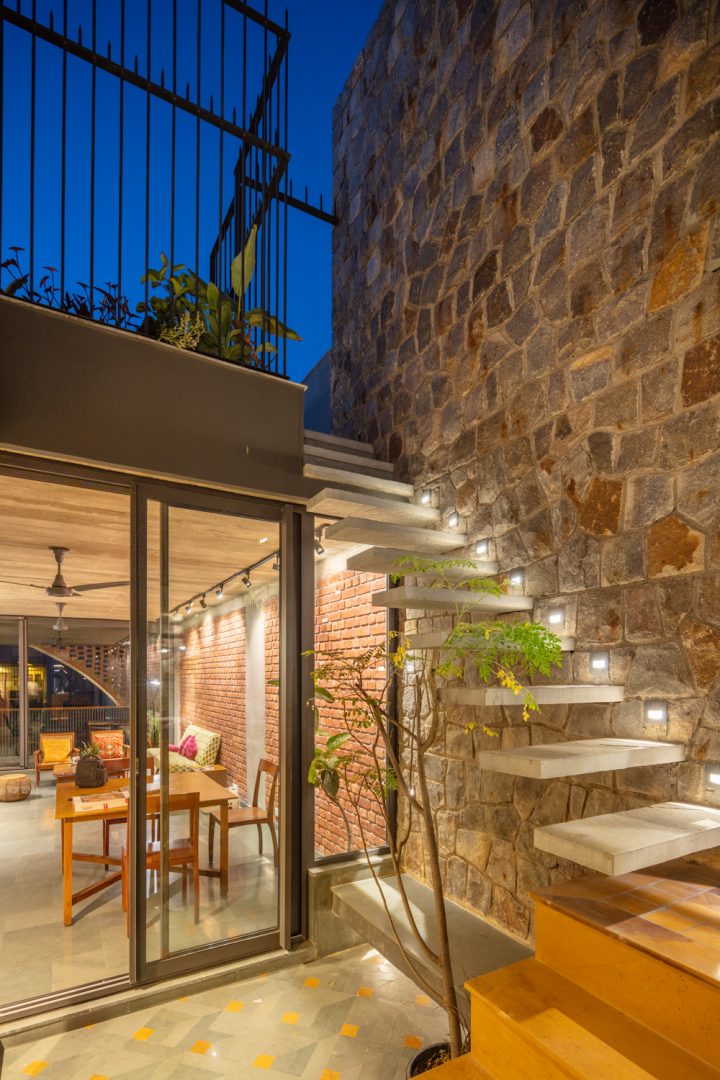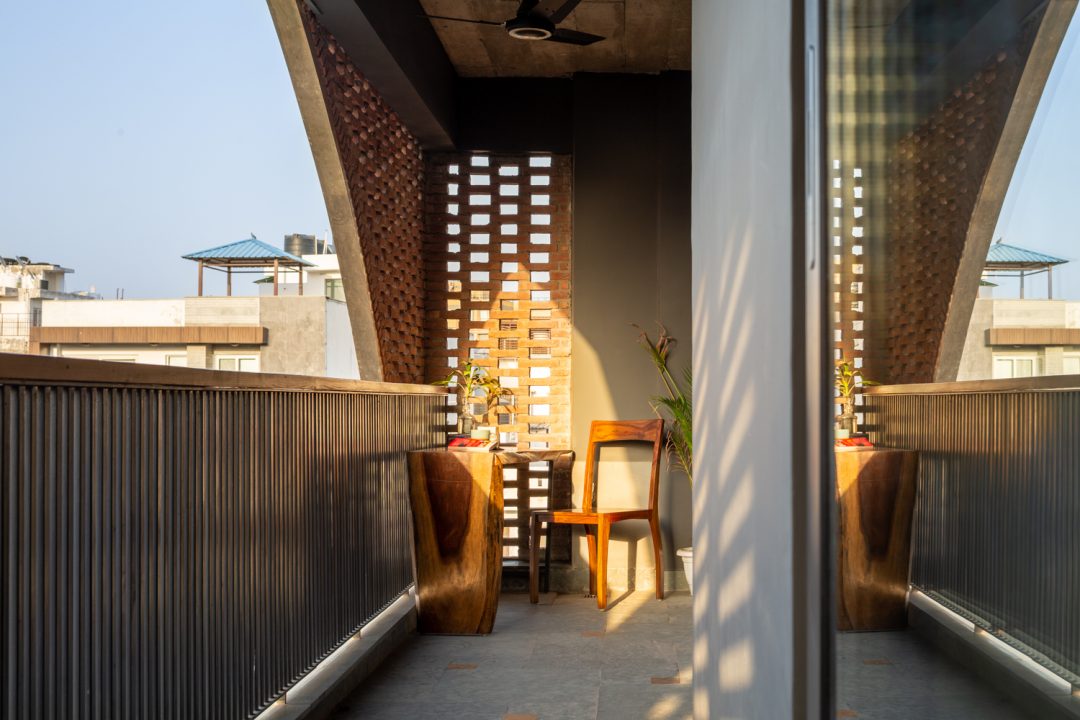An ode to Kahn, the Safdarjang House seeks attention with a circular aperture inside a square brick screen. Designed by AKDA, this 800 sq.m. apartment building is built by a family for private use in a quiet residential street of New Delhi in 2020. The facade is a portrayal of the idea of architecture as imagined by Brutalist Architect Louis Kahn and his take on the architecture of the Indian subcontinent.
Paul Goldberger famously surmised Kahn’s work, “Kahn’s architecture does not cuddle you. It is not soft, and it is not whimsical. He designed somber, poetic buildings of stone and steel and wood and glass, and the best of them are brooding and deep, like a Rothko painting.”
Working within a post-colonial fabric, ended by Le Corbusier’s flexibility and regional modernism, Louis Kahn’s output may be relatively minute, but it had a disproportionate impact on the practice of architecture. His sombre, monolithic forms as seen in IIM Ahmedabad and the Bangladesh Assembly at Dhaka, combined the robust strength of local materials to evoke a mystical yet calm outlook. The act of puncturing seemingly vast brick and concrete walls with soaring geometric voids and creating dramatic shadows was crucial to his form-making. These voids were often circular; vast arches pure in their conceptualization and perfect in their execution, a testament of Indian craftsmanship. Safdarjang House, thus is an essence of his architectural intent about the meaning of architecture as conveyed through form.
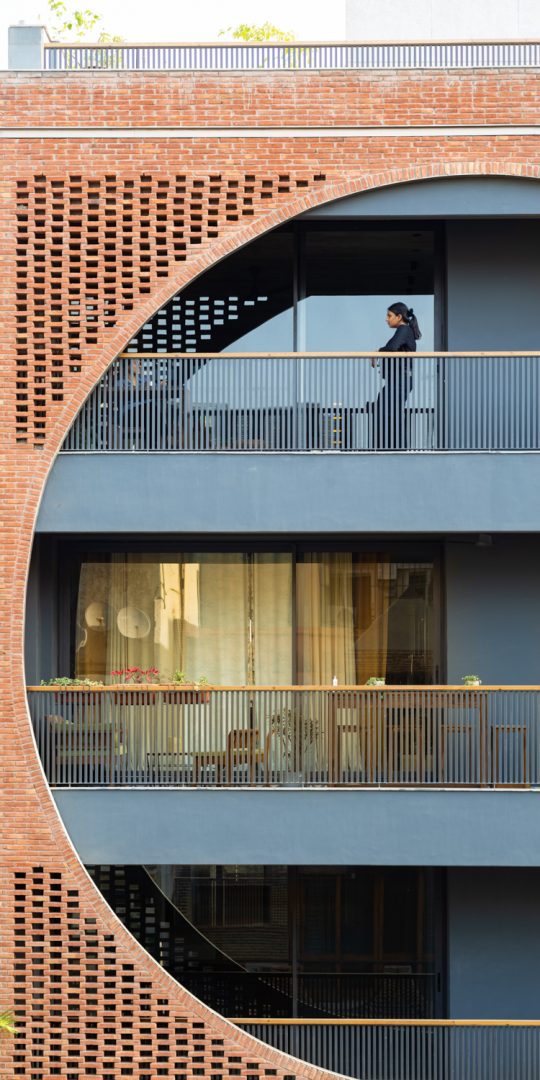
The act of puncturing seemingly vast brick walls to create dramatic shadows was crucial to the form.
Encompassing four apartments elevated above a parking level, the property is wedged by neighbours on both sides. The 30 feet width is the only source of light in the building. With a simplistic floor plan, all services are concentrated in a core on one side of the building, including the staircase, elevator, three bathrooms, kitchen and both bedrooms. The other longitudinal half of the building is an expansive living space illuminated by the full-length windows and an open courtyard on the top floor. The facade is fabricated using thin brick tiles supported on a framework of stainless-steel profiles, acting as both tension rings within the void and supporting angles on the top and bottom of the screen. The brick screen is elevated off the ground level, proportioned as a square circumscribing a circle. The exposed side and rear walls are finished in exposed grit wash, set in white cement plaster.
The interior displays exposed brick walls in contrast to the board-formed concrete of the slabs. Locally sourced Kota stone paving slabs are used for flooring, splashed with mustard yellow Jaisalmer stone in the courtyard and bathrooms. A stainless-steel counter in the open kitchen is offset by blue handmade tiles as the backsplash. The open kitchen itself sits opposite the open courtyard, animated by 2” thick Kota stone steps cantilevered from a quartzite wall that rises to the sky.
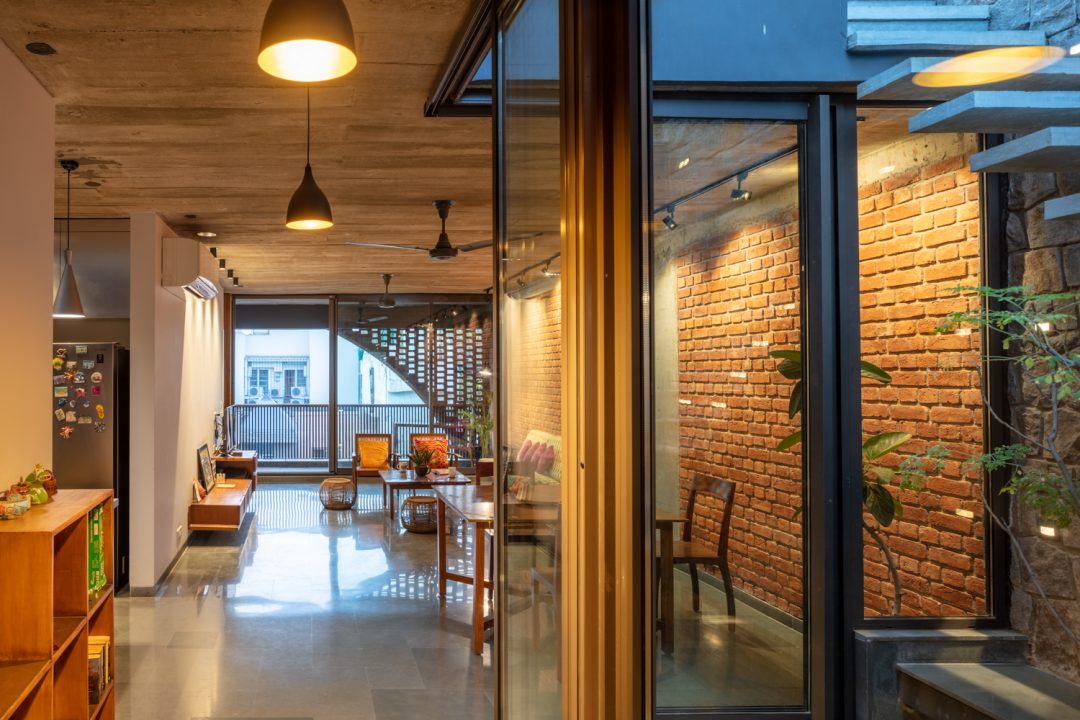
The Living room. 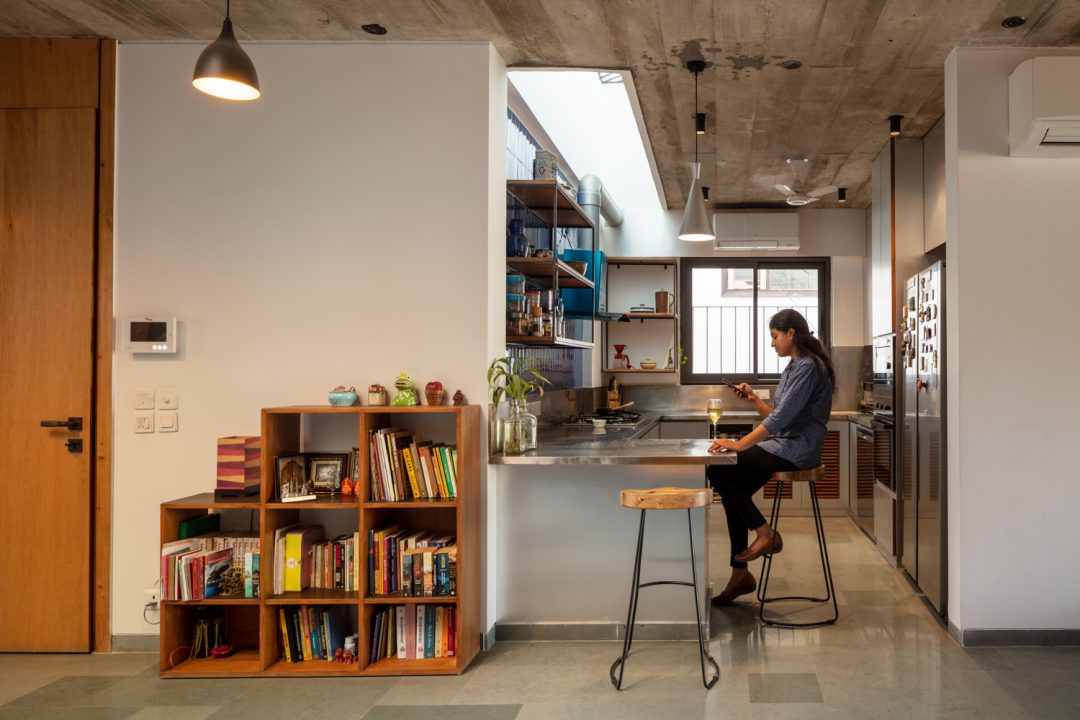
The open kitchen.
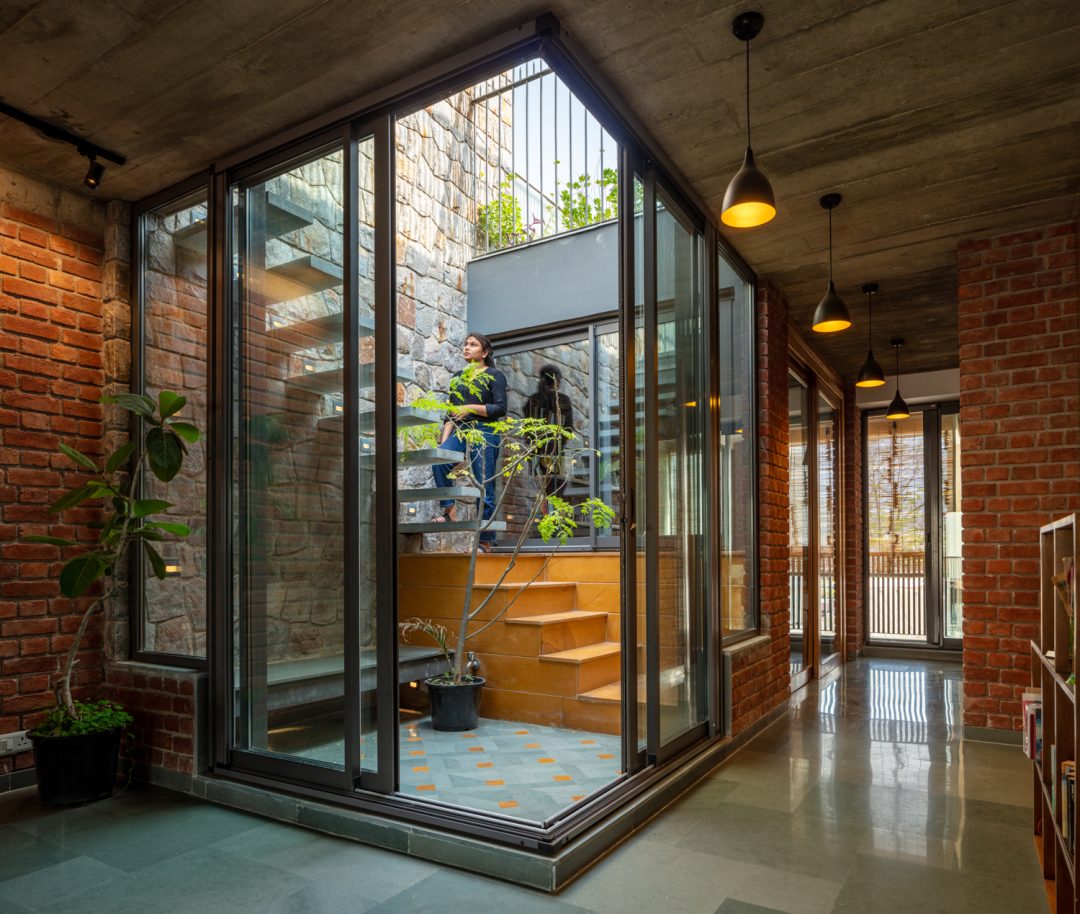
Locally sourced Kota stone paving slabs are used for flooring, splashed with mustard yellow Jaisalmer stone in the courtyard and bathrooms.
The project manifests an understanding about the durability of materials in the harsh climate. Brick is inherently durable, clay bricks last almost indefinitely, being largely immune to fire, wind borne debris, and temperature fluctuations with their thermal mass helping mitigate heat transfer. On a TCO and lifecycle basis, bricks outperform almost every other building material, effectively reducing the environmental impact from other systems like air conditioning and heating.
Every component of the building has been selected with the same parameters of high performance, inherent robustness and energy efficiency. Aluminium windows with double glazing are used all around, the terrace is insulated with inverted pots overlaid with terracotta tiles, the air-conditioning uses variable refrigerant volume based on active monitoring of indoor use, and LED lighting is used throughout the building. Sensors are fitted in the washrooms, and they automatically control the lights based on movement. The apartments are secured with a keyless central security system with digital access.
The quality of buildings in the post-independent era has been a source of debate, as modernist predilections of design ideals forced the abandonment of traditional craftsmanship in the pursuit of bland simplicity. This project seeks to up-end those ideals, fore-going modernity in the pursuit of sustainability, meaning and craftsmanship. Within the urban cacophony that permeates all large cities of the world, it is important to create spaces for quiet repose. Safdarjang House invokes an architectural language that strives to recreate a sense of calm and serenity.
AKDA
Visit: www.akda.in
Email: mail@akda.in
Contact: + 91 11 4170 4150
Photo Credits: Andre Fanthome
Biltrax Construction Data is tracking 17000+ projects on its technology platform for its Clients. Email contact@biltrax.com to subscribe and generate business leads.






